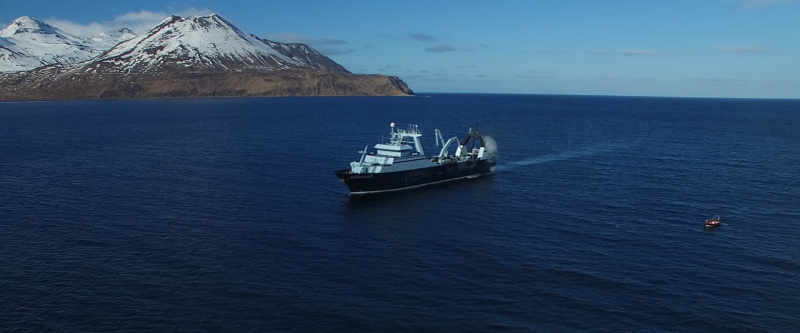By making the switch to MSC certified seafood, you are supporting those in the seafood industry working to make our ocean healthier and feeding our growing global community. Meet four of these individuals and learn about their unique contributions to the growing sustainable seafood movement.
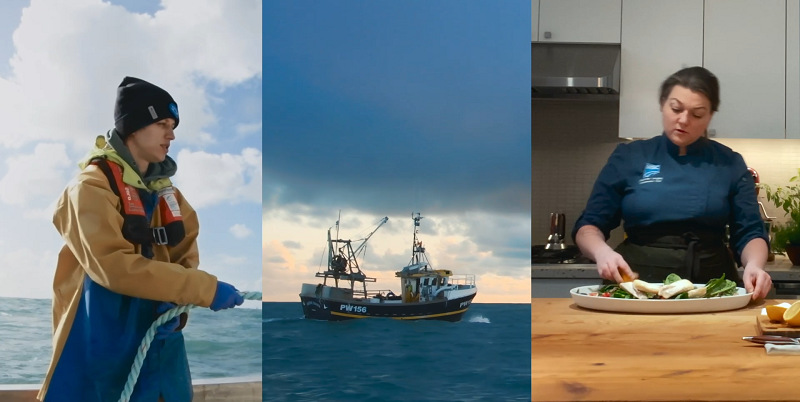
Still, "Let's Come Together for a Big Blue Future and Choose Sustainable Seafood"
One of the best ways to learn more about your seafood—and the Marine Stewardship Council!—is through the work of the individuals involved behind the scenes. From fishermen to seafood processors to chefs, individuals at each step of the supply chain are passionate about bringing healthy, delicious, and sustainable seafood to dinner tables around the world.
Let’s meet a few of these ocean heroes.
The Alaskan Fishery Dedicated to Protecting Our Ocean
Sustainability has long been at the core of the US Alaska pollock fishery, and to prove their commitment to sustainability, the fishery entered the MSC program and was certified in 2005. One of the biggest changes this fishery made to its fishing practices to become more sustainable took place in 1999—years before they joined the MSC program—when they implemented what is called a “catch-share system” in order to improve the safety of fishing, create a more consistent supply of pollock throughout the year, and minimize conflicts between fishing boats.
Before switching to a catch share system, fishing for Alaska pollock was a free-for-all. Boats raced against each other and often fished in dangerous conditions to catch as much pollock as possible before the fishery’s annual limit was reached. This meant that the whole year’s quota was often caught in as little as two months, which led to supply issues (such as too many fish and not enough capacity to process it all), and disputes between boats.
With a catch-share system in place, competition became collaboration.
In most fisheries, there is a limit to how much fish fishermen can catch in a given year or season. In a catch-share system, this quota is divided up among those participating in the fishery rather than allowing boats to catch as much as they want or are able to catch. For Alaska pollock, the new system divided up the entire fishery’s allowed annual catch between individuals, which eliminated the
“race to fish".
Individual boats could now focus on catching their personal limit when conditions were good and selling any of their unused quota to other boats. This allowed the fishery’s annual limit to be caught without overtaxing the marine environment.
The Alaska pollock fishery is continually finding
new ways to improve upon its already impressive sustainable practices. Many boats that fish for pollock are called Catcher/processors (C/P), which means that can catch, filet, freeze, and package fish within hours of catching fish. This efficiency helps keep production steady, keeps costs down, and improves freshness.
And as an added layer of sustainability, pollock processing uses as much of the fish as possible. For example, meat that isn’t turned into fillets becomes surimi (which is used for products like imitation crab). Additionally, pollock roe (fish eggs) is graded by quality and sold in markets around the world.
The Fish Harvester Using Her Voice to Tackle Global Food Insecurity
What would a fishing community be without its local fishermen? Tiare Boyes is a commercial fish harvester, marine conservationist, underwater photographer, and
MSC ambassador.
She’s been working on the water since 2002 when she was a deckhand on her family’s wooden fishing schooner. It was then that she began to see the ocean’s potential to feed the world. Soon, she was invited to attend the UN Committee on World Food Security as a youth fishing representative. At these meetings, she started noticing seafood was being overlooked as a potential resource for
feeding our world’s growing population—a trend she wanted to change by educating and advocating for sustainable seafood systems.
When she’s not fishing for wild Pacific halibut off the coast of British Columbia, Canada (the first
fishery in British Columbia to achieve MSC certification!) she uses her voice to ensure seafood is included in conversations about global food security.
Some might see her roles as both fisherman and conservationist as contradictory. To Tiare, they are a perfect complement:
“I think it’s the only option moving forward – to both conserve and sustainably utilize our marine resources so that we can continue to enjoy healthy coastal ecosystems and at the same time employ families and provide all of us with healthy, delicious food well into the future.”
Her take on both using and conserving marine resources is helping her bridge the gap between fishermen, scientists, and the conservation sector.
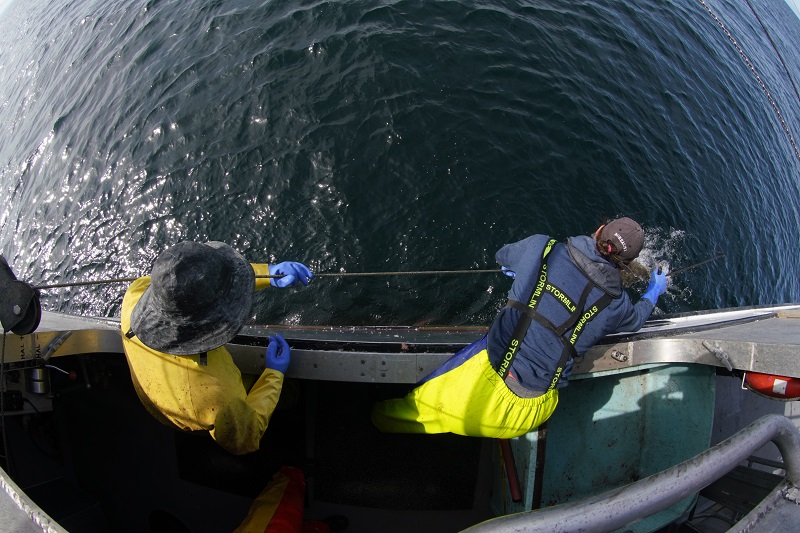
Photo courtesy of Tiare Boyes
The Seafood Processor Breaking Gender Norms and Preventing Seafood Fraud
Meet Mary Ann Barot, the Plant Manager and Head of Quality Assurance of the PNA Tuna Fishery. She is the person who ensures that every step of seafood processing—from cleaning the fish to freezing and packaging tuna loins—is done safely and meets Pan Pacific’s high-quality standards. Mary is far from the only female processor out there: unlike the broader seafood industry, women make up 80 to 90% of the seafood processing workforce. Talk about girl power!
Processing is sometimes done onboard the fishing vessels; other times it’s done in dedicated facilities onshore. Either way, processors like Mary are working tirelessly to ensure the product you receive is the highest quality possible.
Sometimes, things can go amiss during processing and seafood may be mislabeled, resulting in seafood fraud. Seafood fraud is the misrepresentation or mislabeling of a seafood product as something it’s not. It can come in many forms: farmed fish sold as wild fish, species substitutions, or false sourcing claims.
It can be an honest mistake, but it’s more often done intentionally to increase the sale value of a cheaper fish.
DNA research has shown that less than 1% of MSC-certified seafood is mislabeled, making products carrying the MSC blue fish label a trustworthy option for correctly labeled seafood. This figure is a testament to the extra effort processors like Mary are making to ensure that you are enjoying the sustainable seafood options you expect.
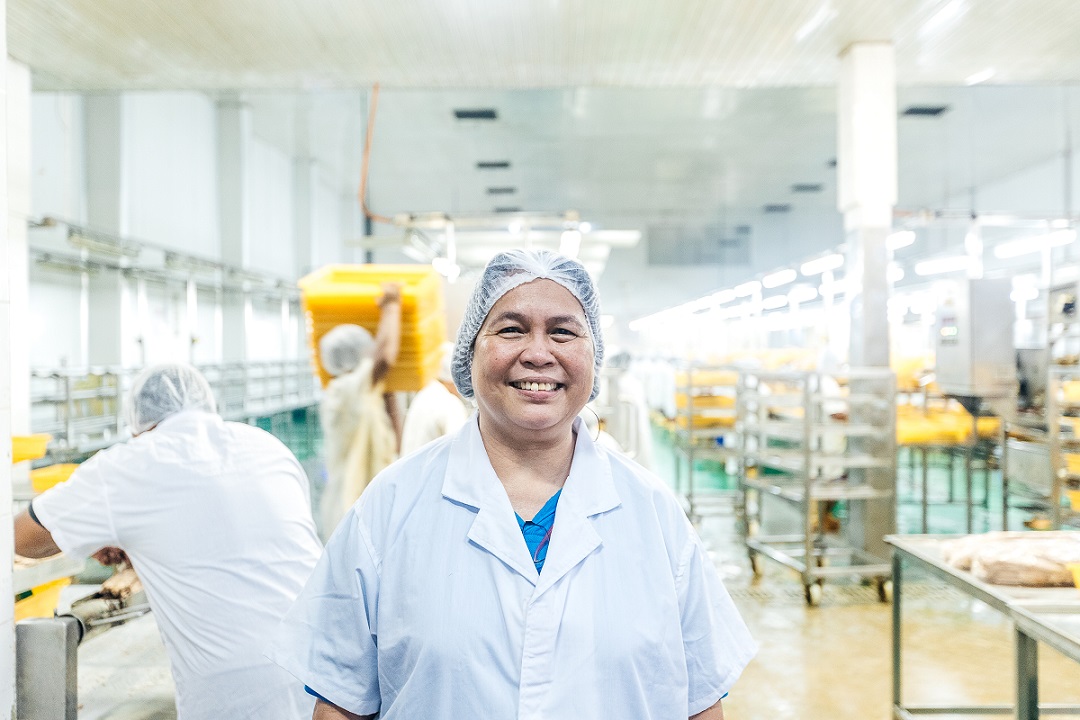
The Chef Helping Seafood Lovers Make the Switch to Sustainable Options
Chef Charlotte is the Chief Culinary Officer & Co-Founder of
Scout Canning, MSC Canada’s
Chef Ambassador, and, most importantly, a sustainable seafood lover. She grew up on Prince Edward Island (PEI), an island off Canada’s east coast globally known for its delicious seafood offerings, so seafood has always been a part of her life.
Many people
feel intimidated by seafood—unsure of how to cook it or unlikely to experiment with new species and recipes because they’re out of their comfort zone. One way to be a more sustainable consumer is by broadening our palates and trying new sustainable seafood dishes based on what sustainable options are available. That’s where chefs like Charlotte Langley come in.
Growing up in such a seafood-oriented location, she’s long been aware of the many varieties of seafood available and the important role that fisheries play in people’s lives. This has led her to prioritize sustainability at home and as part of her professional cooking career. She aims to cook seafood that leaves a positive impact on the ocean by using only sustainable options.
Chef Charlotte also recognizes that not everyone knows where their fish comes from—how it’s caught, packaged, shipped, etc.—and she wants to help these people better understand the journey of seafood so they can take action for our one shared ocean and commit to eating sustainably.
Chef Charlotte has curated a collection of online video tutorials designed to help seafood lovers learn how to find and cook sustainable seafood, and more information about what sustainable seafood really is.
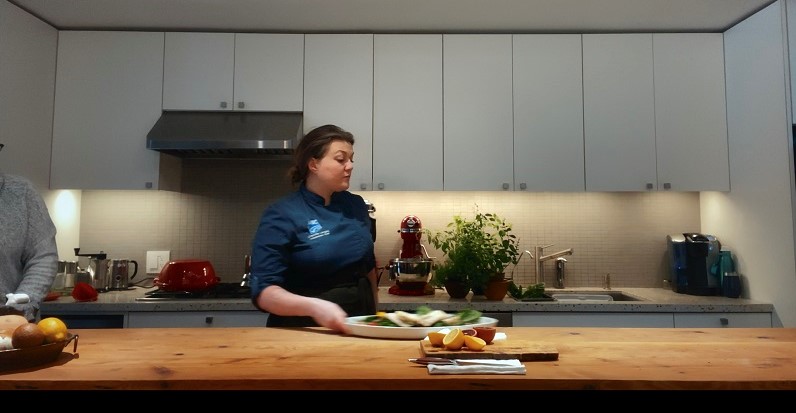
When you’re shopping for seafood this summer, think about some of these people who work hard day in and day out to bring sustainable seafood to dinner tables around the world. Your small step at the grocery store to purchase MSC-certified options supports the people working tirelessly towards a healthier ocean and a more sustainable future.
It’s only with collective action that we can ensure a healthy ocean full of fish for generations to come. What action will you take today? 
